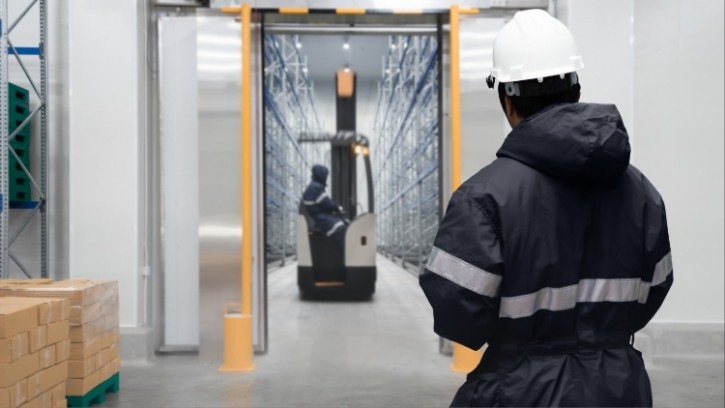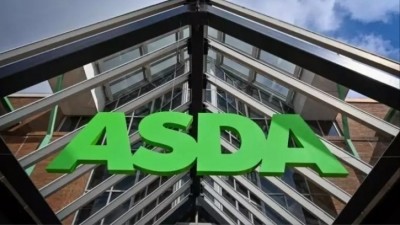News
Enhancing the cold chain to eliminate food waste

According to the United Nations Environmental Programme (UNEP), around a third of all food produced for human consumption is lost or wasted. This could feed around 1bn people in a world where more than 800m people are going hungry. Food waste is undoubtedly a pressing global issue with profound implications for the environment, economy and food security the world over.
One of the most impactful solutions to eliminating food waste, which UNEP believes could prevent upwards of 526m tonnes from being landfilled every year, is improving cold chain logistics. Bolstering infrastructure and improving processes would drive a significant reduction in waste, while enhancing food security and contributing to a far more environmentally-friendly food supply chain.
The link between cold chain and food waste
The cold chain is the temperature-controlled supply chain essential for preserving the quality and safety of perishable products. This includes everything from the point of production, through transportation and storage, to the final consumer. For perishable foods like dairy, meat, seafood, fruits and vegetables, maintaining optimal temperature conditions is crucial to prevent spoilage, extending shelf life and slowing the spread of harmful bacteria.
Inadequate cold chain infrastructure, however, is a major contributor to food waste. Without reliable refrigeration, large quantities of food spoil before even reaching end-consumers. Even for businesses with otherwise extremely efficient food supply chains, inefficiencies and gaps in the cold chain can prove a chink in the armour.
Effective cold chain is also vital for helping slow the spread of harmful bacteria and pathogens. In June, the UK reported a major E. coli outbreak, with a number of packaged foods recalled from supermarkets to prevent further infections. Aside from the obvious danger to human health, a side-effect of food contamination is the generation of additional waste as goods are incinerated. Robust cold chain logistics, with a heightened focus on safety and transport conditions, are an essential tool for helping alleviate the spread and effects of food contamination.
The benefits of an effective cold chain
Improving cold chain logistics can drastically reduce food spoilage and increase overall food safety. Proper refrigeration ensures that perishable foods remain safe and retain their nutritional value from farm to table. This is crucial for high-value products like meat and seafood, where spoilage can result in significant financial losses.
Enhanced cold chain systems can also extend the shelf life of perishable goods, providing more time for them to be consumed. This can reduce the pressure on retailers to sell products quickly and on consumers to use them before they spoil. Extended shelf life also facilitates better inventory management and reduces the frequency of under- or over-stocking.
As well as reducing spoilage and extending the lifespan of food, a robust cold chain helps maintain food safety by preventing the growth of harmful bacteria (like E. coli and salmonella), which grow and thrive at higher temperatures.
Alongside tackling the negative implications, reducing food waste through a more efficient cold chain can lead to significant economic benefits too, with producers and retailers alike saving money by minimising losses due to spoilage.
Building a more resilient food supply chain
While the benefits of an improved cold chain are clear, implementing such improvements comes with its own set of challenges. High initial investment costs and energy requirements can be significant barriers, for example, but there are several strategies can help overcome these challenges.
It is critical when discussing food supply chains to factor in the entire lifecycle of food, which very often involves the import of raw and processed food from abroad, including developing countries across Africa, Asia and South America. It’s therefore essential that efficient cold chains be built into the entire food chain, and not only once it reaches UK shores. Governments and private sectors must continue to invest in building and upgrading cold storage facilities, refrigerated transport, and temperature monitoring systems, especially in countries which need additional infrastructural support. Public-private partnerships can be an instrumental tool in mobilising the necessary resources.
Leveraging modern and innovative technology can also enhance the efficiency and affordability of cold chain systems. Solar-powered refrigeration units, for instance, offer a sustainable solution for regions with limited electricity access. Advanced monitoring systems using Internet of Things (IoT), on the other hand, can provide real-time data on temperature and humidity, ensuring optimal conditions are maintained throughout the supply chain.
Educating farmers, transporters and retailers about the importance of maintaining the cold chain and how to do so effectively is crucial. Training programmes can help stakeholders to replicate best practice and adopt new technologies.
Lastly, government policies and regulations can also incentivise cold chain investments and provide support for innovation, through subsidies, tax incentives, and grants that encourage businesses to invest in cold chain infrastructure.
What can operators do with spoiled food?
While preventing food waste through a more effective cold chain should be the top priority, there will always be unavoidable waste that slips through the net. If this waste cannot be redistributed, reused or is considered otherwise unsuitable for human or animal consumption (such as bones, gristle and spoiled produce), it should be recycled.
Delivered on an industrial scale, food waste recycling harnesses the anaerobic digestion (AD) process to capture methane released during the natural degradation of food. This gas can either be combusted to generate renewable electricity, or upgraded and injected directly into the national gas grid. Nothing goes to waste during the process. Even the resulting digestate can be used as a sustainable biofertiliser by local farmers.
Food waste recycling can be quickly and easily integrated into existing waste management practices. ReFood collect all types of food, including preparation waste, scraps and even packaged products. Most importantly, with no costly landfill tax to pay, businesses can expect to save around 50% on waste management costs.
Looking ahead…
Improving the cold chain is not a silver bullet for eliminating food waste, but it is a vital component of a comprehensive strategy to address the global food waste crisis.
By ensuring that perishable foods are kept at optimal temperatures throughout the supply chain, we can significantly reduce spoilage, extend shelf life, and enhance food safety. This, in turn, can lead to economic savings, better food security, and alleviated environmental impacts.
As we strive for a more sustainable future, investing in and enhancing the cold chain must be a priority for policymakers and businesses. Where food does spoil, food waste recycling should be the first port of call.
In other news, what’s next for alternative proteins after category consolidation?
















